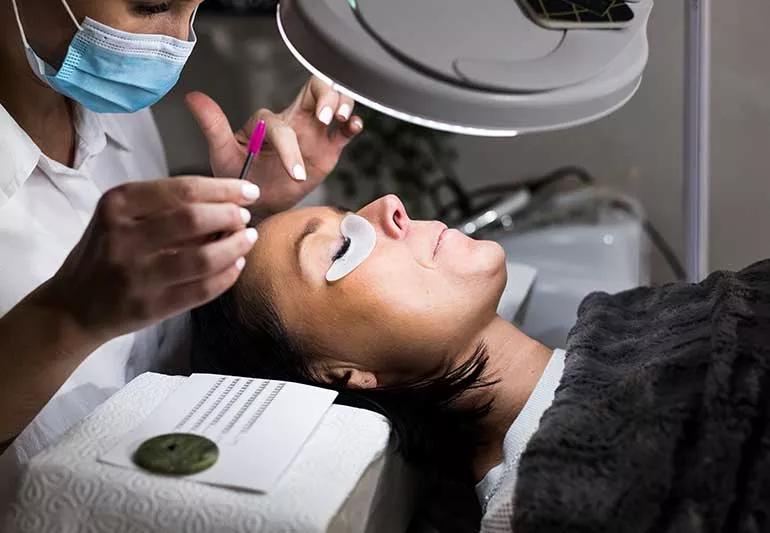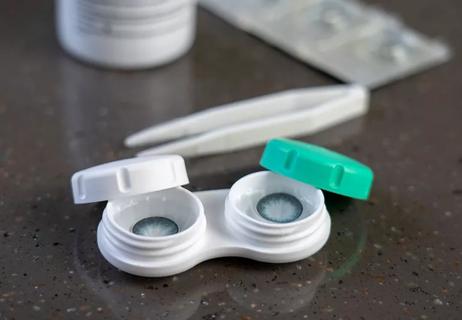Allergic reactions and overprocessing are just a couple things to keep an eye out for

The desire for longer eyelashes isn’t a new one. For decades, beauty products have been developed — and heavily marketed — to create fuller, more voluminous lashes.
Advertisement
Cleveland Clinic is a non-profit academic medical center. Advertising on our site helps support our mission. We do not endorse non-Cleveland Clinic products or services. Policy
People have tried everything from special mascara formulas to lash extensions and even eyelash-growing drugs in search of longer lashes. But our delicate eyelashes (and eyes!) deserve to be treated with special care. Remember, before undergoing any intense beauty procedures, your eyelashes are meant to protect your eyes.
But if you’re curious about lash lifts — the recently popular procedure that curls the lashes you have — read on, as ophthalmology specialist Nicole Bajic, MD, shares what you should know about this eyelash procedure.
As the name implies, a lash lift is a cosmetic procedure that’s meant to curl your existing eyelashes, giving the appearance of longer, fuller lashes.
“It might make it look a little longer because it’s curled, but it’s not actually making the lashes longer or thicker,” notes Dr. Bajic.
Of course, false lash extensions and false eyelashes have been around forever, although anyone who’s done them before knows that they require a bit of upkeep. Plus, some people complain the results don’t provide a natural enough look.
A lash lift, on the other hand, is exactly what it sounds like. It’s meant to give the lashes you already have a bit of a boost. “Basically it’s like a perm,” explains Dr. Bajic. “But instead of it being applied to your hair, the solution is applied to your lashes to give them a curled effect.
Advertisement
“Some people may not want a very dramatic-looking lash extension and they’re moving away from that,” she continues. “And maybe more people are trying lash lifts because it’s enhancing their natural lashes.”
Just like getting lash extensions, in order to get a lash lift, you should go to a certified beauty expert. (In other words, it’s not a good idea to DIY this one on your own — more on that later).
Here’s how it works: At a salon, a technician will start by putting a bit of silicone mold on your eyelid using a non-toxic glue. After that, a chemical is applied to your lashes that’s meant to break down and then reorganize the disulfide bonds in your lashes, giving them a curled effect. Next, a perm solution is added over the lash and sits for about 15 minutes.
While the procedure is fairly simple, it will take around 45 minutes in total to account for application, drying and wait time. Similar to a perm as well, lash lifts are semi-permanent — this means that once your new lashes start to grow in, this treatment runs out and you’ll need to get it redone.
So, is it a procedure worth batting your lashes at? While it seems like it’s just a couple of levels up from using a drugstore eyelash curler, it’s actually much more involved.
One of the main concerns with getting a lash lift is the potential for an allergic reaction. “Very frequently, people can have a sensitivity to fragrances or added chemicals,” cautions Dr. Bajic.
According to Dr. Bajic, an allergic reaction to a lash lift procedure can often include the following symptoms around your eyes:
“There’s also a lack of clarity about the chemicals that are actually being used,” she adds. Ideally, a test patch can give your technician a good idea if you’re going to have an allergic reaction. However, that’s not always a guarantee.
“Overall, I don’t recommend these being done, but if someone insists on having it done, I really think it’s the best practice to at least have a patch test done prior,” she stresses. “And it seems like that’s not being done routinely.”
Another thing to be cautious about is overprocessing. Just like getting your hair dyed — after a certain number of times, it can damage it in the long run. So, too, can eyelash procedures.
“These lash lifts are chemically altering your hair, as well as affecting a very sensitive part of your face,” points out Dr. Bajic.
In short, any kind of overprocessing simply speeds up the thinning out of your hair that happens with age. The same goes for your lashes.
Advertisement
“If you’re always applying some sort of chemical to these lash follicles, it changes them over time,” she says.
Aside from allergic reactions, lash lifts can also cause some other eye-related conditions that you do not want to deal with.
According to Dr. Bajic, doing any kind of intense cosmetic procedures to your lashes (even extensions or fake lashes) can make you more prone to conditions like blepharitis or inflammation of the eyelids.
Dr. Bajic also points out that eye hygiene is at times overlooked when people are getting cosmetic procedures like this. For example, after getting a lash lift, your technician may recommend not cleaning the area so as not to interfere with it. But this can be an infection waiting to happen.
“You want to keep your eyelashes clean,” she advises. “It’s horrible advice to tell someone not to clean around your lashes because that lets things build up. Sometimes, some of these eyelash treatments can make you more prone to infections.”
As far as long-term effects go, there’s still limited research on how lash lifts can impact your lash growth and eye health in the coming years.
“We don’t know what the long-term potential effects are,” says Dr. Bajic. “There’s a lot we still don’t know, and we’re only going to figure out later on if it’s a bad idea or not, especially when it comes to applying chemicals right around our eyes.”
Advertisement
We’ll keep this simple: no. If you do opt for trying a lash lift procedure, it’s best to go to an expert. They’ll know the right products to use and can do a test strand to see how your lashes and skin react to the procedure. Plus, as Dr. Bajic notes, it’s risky to do an intense procedure like this to your own eyes, as it’s hard to actually inspect what you’re doing.
If you’re feeling weary about lash lifts, there are luckily other options you can go for that can give your eyelashes a lift.
“My recommendation is, if you want a curled effect of your lashes, just use a regular old eyelash curler,” says Dr. Bajic.
Overall, lash lifts are generally not recommended because of the risk of allergies and infection. But if you do choose to give it a try, definitely head to a certified salon and insist on a patch test first. And save the procedure for special occasions.
“If it’s couple times a year for something like a wedding or a big event, you’re probably not going to cause significant damage and it should be fine,” says Dr. Bajic. “But it’s the constant trauma where I think the real problems seem to crop up.”
Advertisement
Learn more about our editorial process.
Advertisement

Eye drops and cold water rinses can help speed up healing for viral and allergen-related conjunctivitis, but a bacterial infection will need antibiotics

Eye crusts can signal an infection or your body’s natural self-cleaning at work

This glaucoma drug can also thicken lashes, just note side effects

For starters, don’t sleep in contact lenses

Most recommended precautions center around minimizing bruising or swelling

Even one drink can have an impact on your cognitive function leading to slurred speech, blurred vision and impaired memory

Type 2 diabetes isn’t inevitable with these dietary changes

Applying a hot or cold compress can help with pain